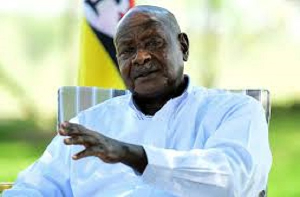The Volta River Authority’s indebtedness to the Ghana Gas Company grew by approximately 120% over a six-month period -- from US$103.61 in June 2015 to US$227.78 in December 2015, the 2015 Annual report of the Public Interest and Accountability Committee has shown.
Since April 2015 when Ghana Gas began commercial operations, it has processed a total of 24,211million standard cubic feet of wet gas into lean gas and other derivatives, such as LPG and condensates, valued at US$268.12million.
The Ghana Gas Company, according to the PIAC report, has so far received US$34.99million, representing 13.5% of the US$268.12million it is owed.
VRA alone, the report said, is responsible for 97% of the outstanding receivables of US$234.25million owed the Ghana Gas Company.
“Total interest payable by VRA in respect of its debt accrued from the lean gas supplied by GNGC at the end of the review period was US$1.12million,” the report indicates.
As a result of the debt, the Ghana Gas Company, on its part, is indebted to the Ghana Group (GNPC and government) to the tune of US$79.06million in respect of raw gas delivered to the Atuabo Gas Processing plant from the Jubilee Field since gas production began.
In its recommendations, PIAC urged the Ministries of Petroleum and Power to regard settlement of the debt “as a matter of urgency” so that the Ghana Gas Company does not fall into “the never-ending cycle of indebtedness prevalent in Ghana’s energy sector”.
“When the debt is settled it will also ensure that the Ghana Gas Company is in a position to pay the GNPC for raw gas exported to the Atuabo Gas Processing plant,” said PIAC, which has the mandate to monitor and evaluate government’s compliance with petroleum revenue spending.
In February when he inaugurated a new board for the Ghana Gas Company, Petroleum Minister Emmanuel Armah Kofi Buah admitted “It is very crucial that we deal with this issue”, saying it is partly why the energy sector levies were introduced.
“If you see the government recently announcing a levy, it is because the survival of Ghana Gas and the future supply of lean gas is at stake,” the minister said.
While the web of debt in the energy sector is threatening survival of the national gas processing company, more gas is expected from the TEN and Sankofa Fields, and the company will have to invest in more infrastructure if it is to handle all that gas.
The new energy sector levies, introduced some six months ago, are expected to help clear the web of debt in the energy sector.
In view of the situation’s urgency, however, government has recently indicated it will go ahead and issue a bond of between US$1.5million and US$2million to help clear the debt in good time, while the levies are used to service the bond.
“The levy comes in trickles and it will take a lot of time before we can accumulate that quantum of money to pay. So the bond is to kind of frontload payment to the banks while we service the banks as money comes in,” Prof. Thomas Akabza, Chief Director of the Petroleum Ministry told the B&FT recently.
Per the new petroleum price build up, GHp41 is charged per litre of petrol and litre of diesel, while GHp37 is charged per kilogramme of LPG for the Energy Debt Recovery Levy.
Government has explained that the levy is meant to help clear what is described as ‘legacy debt’ - estimated at some US$1.5billion - which hangs around the necks of power sector utilities VRA, ECG and GRIDco.
Business News of Wednesday, 29 June 2016
Source: B&FT
VRA owes Ghana Gas US$227 million
Entertainment












